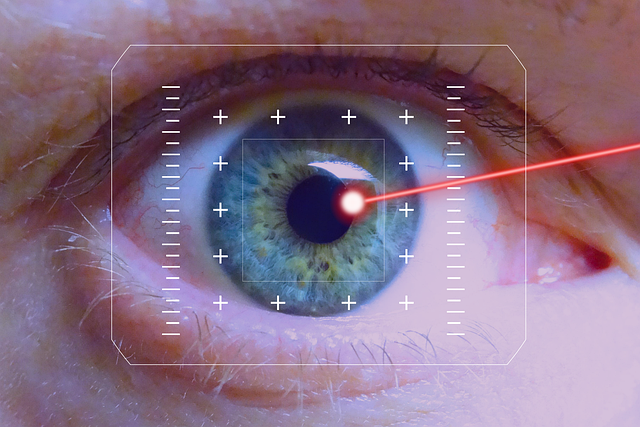The modern visual landscape is defined by ever‑increasing pixel densities and sophisticated color processing pipelines. Whether a viewer is watching a 4K broadcast, streaming a 8K movie, or interacting with a professional design monitor, the integrity of the displayed image hinges on how effectively the system can retrieve and refine the original visual data. This process, known in the industry as image restoration, is more than a technical nicety; it is the bridge that connects raw sensor data to the vivid scenes that occupy our screens.
From Sensor Capture to Pixel Realization
Every high‑resolution display starts with a sensor—either a camera in a broadcast set‑up or a scanning unit in a film digitizer. The sensor samples light across a two‑dimensional array, converting photons into electrical signals. Those signals, however, are riddled with imperfections: read‑out noise, sensor dead pixels, and color filter array (CFA) artifacts. The first step of image restoration is to mitigate these sensor‑level anomalies through calibration, denoising, and demosaicing before the data is even forwarded to the display pipeline.
- Calibration corrects for systematic bias and gain variations across the sensor.
- Denoising algorithms suppress random noise while preserving edges.
- Demosaicing reconstructs full‑color information from the CFA pattern.
Signal Processing Pipelines in Modern TVs
After sensor preprocessing, the data enters a series of digital signal processors (DSPs). These processors handle tasks such as gamma correction, tone mapping, and chromatic adaptation. The goal is to adapt the raw scene luminance to the display’s capabilities while maintaining a faithful representation of the original colors. In high‑resolution TVs, especially those with HDR support, the dynamic range can exceed 12 bits per channel, demanding sophisticated mapping functions to preserve detail in both shadows and highlights.
“In the realm of high‑resolution visualization, the fidelity of the signal chain is as crucial as the pixels themselves.” – Dr. Elena K. Mikhailov, Senior Display Engineer, Technicolor.
Spatial Upscaling: Bringing Low‑Res Content to HD Screens
Even with a 4K or 8K display, content is not always available in native resolution. Many broadcasts, streaming libraries, and legacy media files are still in 720p, 1080p, or even SD. To bridge this gap, displays use spatial upscaling techniques—a core component of image restoration. Two primary categories dominate the field: interpolation‑based methods and deep‑learning neural networks.
- Interpolation‑Based Upscaling: Algorithms such as bicubic, Lanczos, or more advanced edge‑aware filters enlarge images by estimating pixel values based on neighboring samples. These methods are computationally lightweight but can introduce blur or ringing artifacts.
- Neural Upscaling: Leveraging convolutional neural networks trained on vast datasets, these models learn to reconstruct high‑frequency details, texture, and contextual cues. While offering superior visual quality, they require significant processing power and careful tuning to avoid hallucinations or color drift.
Adaptive Sharpening and Noise Suppression
Once a low‑resolution source has been upscaled, the resulting image may still contain residual softness or digital noise. Modern displays employ adaptive sharpening filters that detect edges and selectively enhance them, enhancing the perceived crispness without introducing harsh halo effects. Concurrently, noise suppression modules analyze the spatial frequency spectrum to suppress high‑frequency artifacts while preserving genuine detail.
Color Fidelity: The Role of HDR and Gamut Mapping
High‑resolution displays often support high‑dynamic‑range (HDR) formats such as HDR10, Dolby Vision, or HLG. The HDR pipeline elevates the luminance range from 100–1000 cd/m² to 1,000–10,000 cd/m², demanding meticulous color space conversions. Image restoration in this context involves mapping the source color space (e.g., Rec. 709) to a broader gamut like DCI‑P3 or Rec. 2020, then performing tone mapping to fit within the display’s peak brightness constraints.
Temporal Enhancement for Motion Content
Fast‑moving scenes introduce motion blur and interlacing artifacts. Temporal enhancement algorithms address these issues by analyzing consecutive frames to estimate motion vectors and apply de‑blurring or motion compensation. The result is smoother motion with reduced ghosting, a crucial improvement for sports broadcasts, gaming, and cinematic action sequences.
Professional Monitors and Image Restoration Standards
In the graphics, film, and medical imaging industries, monitors must meet rigorous standards—such as ISO 12233, ITU‑H.273, or the VESA DisplayHDR specifications. Image restoration here goes beyond consumer-level enhancement; it involves precise calibration routines that align monitor output with standardized colorimetric targets. Calibration tools measure luminance, chromaticity, and response curves, feeding data back into the display’s internal calibration engine to maintain color accuracy over time.
Future Directions: AI‑Driven Adaptive Pipelines
Looking ahead, AI is poised to redefine image restoration in high‑resolution displays. By integrating real‑time neural networks that adapt to the content type—whether it’s a documentary, an animated feature, or a medical scan—display systems can dynamically adjust sharpening, color mapping, and noise suppression. Emerging standards such as VESA’s Advanced Color Management aim to embed AI‑based profiles directly into the display’s firmware, offering end‑to‑end optimization without external calibration devices.
In conclusion, the evolution of high‑resolution TV and monitor displays is inseparable from advances in image restoration techniques. From sensor calibration to neural upscaling, color fidelity to temporal enhancement, each layer of the display pipeline contributes to a faithful, immersive visual experience. As content creators push the boundaries of resolution, dynamic range, and realism, the role of sophisticated image restoration will only grow, ensuring that every pixel on the screen accurately reflects the original creative vision.




